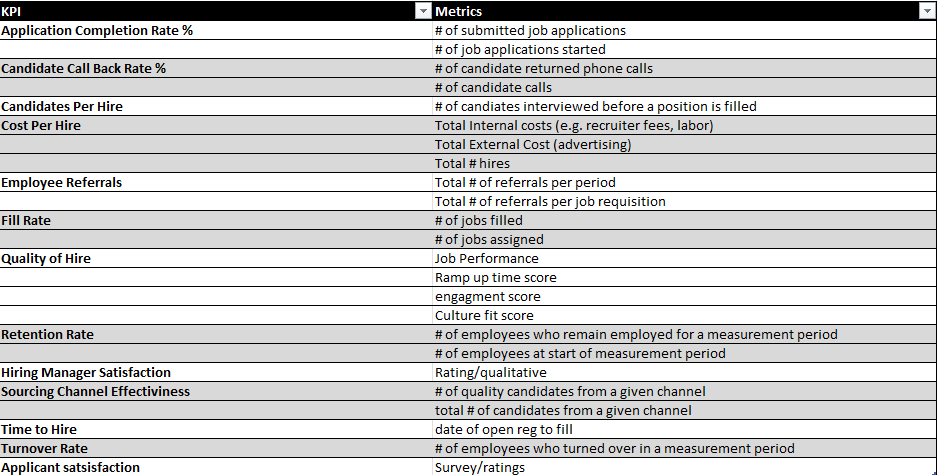 Talent acquisition, like every field in the business world, has evolved drastically with the emergence of new technologies and the accessibility of information. In this blog series, we’ll dig into what types of data is available to help in the talent acquisition process, what tools Talent Intelligence provides to analyze and make use of that data, and other ways we can help you change the way you approach talent acquisition.
Talent acquisition, like every field in the business world, has evolved drastically with the emergence of new technologies and the accessibility of information. In this blog series, we’ll dig into what types of data is available to help in the talent acquisition process, what tools Talent Intelligence provides to analyze and make use of that data, and other ways we can help you change the way you approach talent acquisition.
Analytics can mean a lot of different things to a lot of different people, and there’s seemingly more data available every day than there was the day before. The specifics of what data is available and what data is important often varies by organization, industry, and even the context in which the data will be used. Here at Talent Intelligence, we use a customized approach that ensures we capture accurate and useful metrics that matter to you and your hiring goals.
How We Approach Data
There is clearly a wide variety of data available to hiring professionals, and making sense of that data, as well as turning that data into usable metrics that can be analyzed, is key. We start by separating data into the following categories that vary by data source, as well as offer a different perspective. Taken together, we can establish a more complete picture of your recruitment efforts.
- Internal and External Data
- Internal data is collected from your current workforce and/or recruitment funnels
- External data is used to fill in the gaps left by internal data, collected from job candidates or other sources outside your organization.
- Descriptive and Predictive Data
- Descriptive data is quantitative information that describes your current state, i.e. head count or diversity metrics. However, for descriptive data to be valuable, it must be put into context or compared against something (e.g. a target, a goal, or another data point), like looking at the number of job applications you receive from a job board vs social media, as opposed to simply looking at the total number of applications in isolation.
- Predictive data uses existing patterns to predict the likelihood of future events. For example, do certain patterns of past experiences, profiles, markets, etc. do better in your organization than others? That is something to know when formulating your talent strategies.
How to Use This Data in Your Talent Acquisition Efforts
Our approach is to first gather the data that is available. Once we have that data, we can sort them into our metrics and establish Key Performance Indicators (KPIs) based on those metrics. Then we analyze the data to see what outcomes different KPIs are related to. For example, we could use this information to model out which candidate characteristics or sourcing strategies are related to outcomes like candidate quality ratings, interview performance, job performance, etc. When we look at all of these metrics together, we can take those findings to your key talent pipeline and use them to enhance your current talent acquisition strategies, build new strategies that address your hiring goals, and monitor your talent data to ensure you reach those goals.
Examples of Pipeline KPIs and Metrics Recommended by Talent Intelligence

That is the true value in this analytic data: the ability to layer these established KPIs and the metrics related to them over your talent pipelines. Understanding the performance of different areas of your business – like the efficiencies and effectiveness of your different talent strategies – is key to making the right hiring decisions when it comes to your specific goals. For example, when looking to increase organizational diversity, layering demographic data in conjunction with these pipeline metrics provides you a powerful way to optimize your diversity strategies and learn what techniques work best for attracting diverse candidates to your organization.
 We Have Much More to Discuss
We Have Much More to Discuss
This is just a brief introduction into the analytical arm of Talent Intelligence and the benefits that real, data-driven solutions can have on your talent acquisition process and goals. To learn firsthand how we can help you attract top tier talent, contact us today. Otherwise, learn more about the specific analytic tools we use in the next blog in this series.